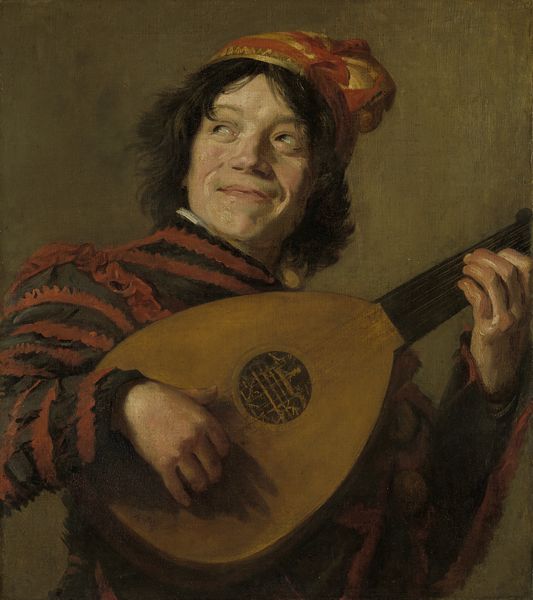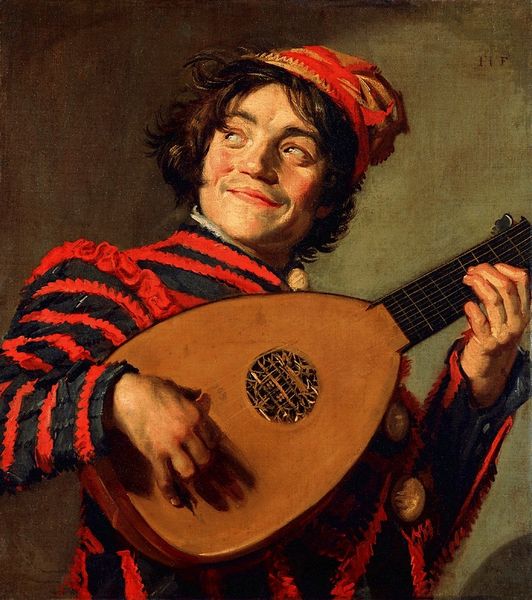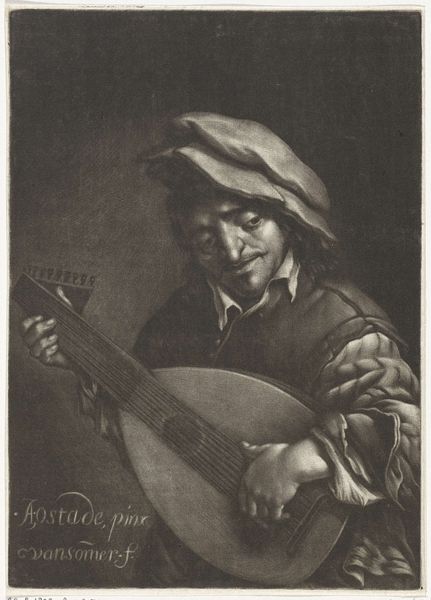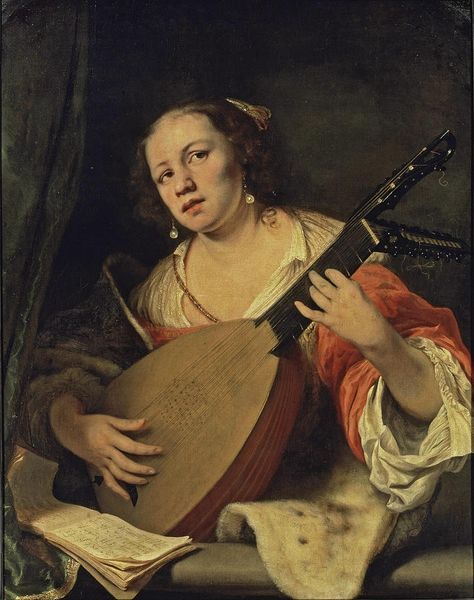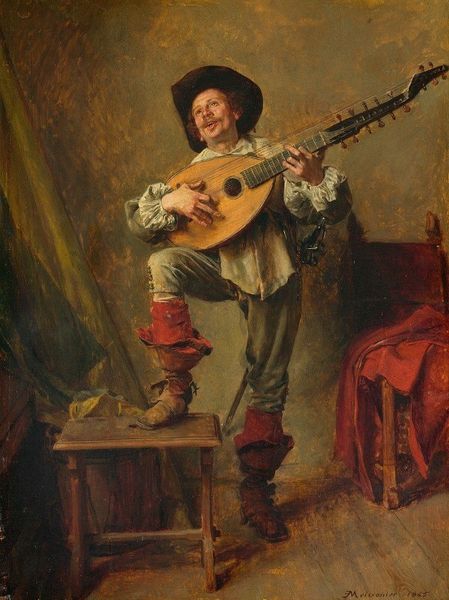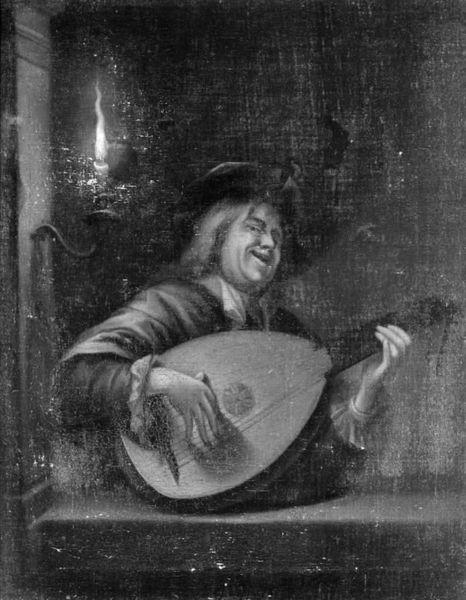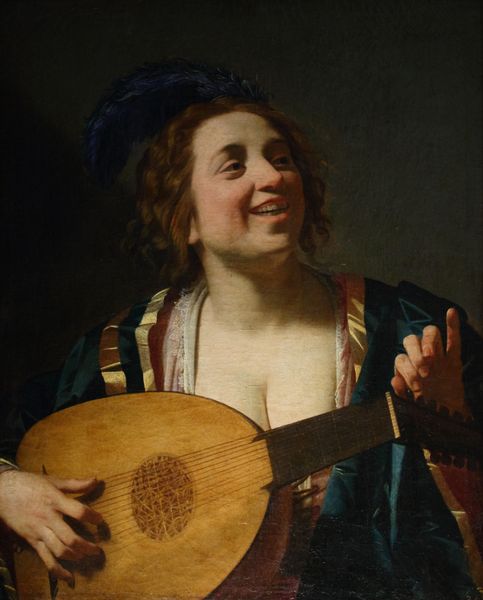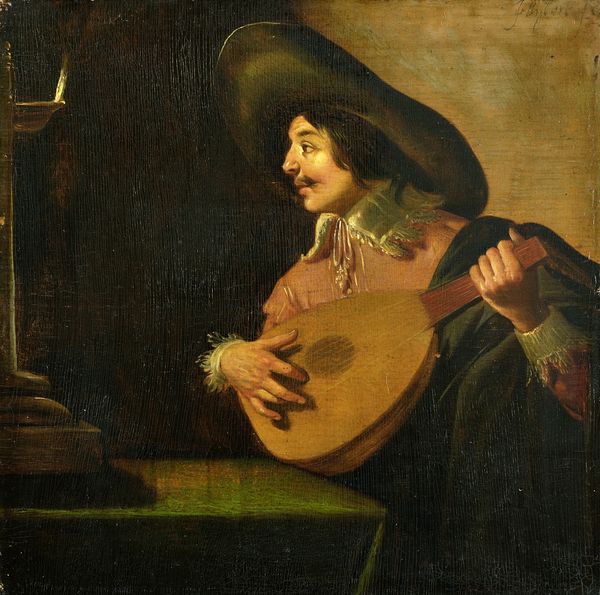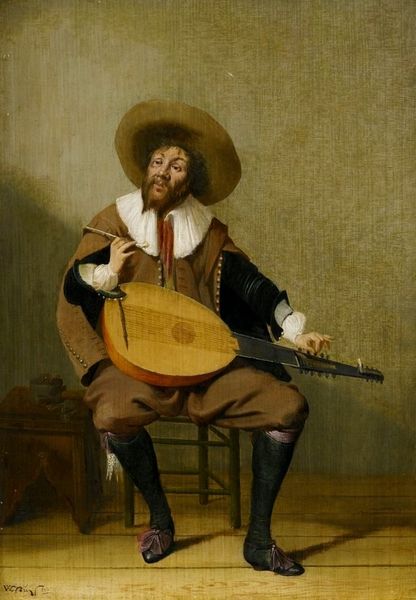
painting, oil-paint
#
portrait
#
baroque
#
dutch-golden-age
#
painting
#
oil-paint
#
figuration
#
oil painting
#
genre-painting
Copyright: Public domain
Curator: Here we have Judith Leyster’s “The Jester,” painted around 1625, rendered in oil on canvas. Editor: Immediately, what strikes me is the warm tonality and that upward gaze. It’s a lively, engaging image. The rawness of the application is visible. You can feel the character’s spirited performance through Leyster's mark-making, like you’re sharing the space. Curator: Leyster worked within a Dutch Golden Age context that both enabled and constrained female artists. Genre paintings, particularly those depicting musicians, often carried moralizing messages but consider how Leyster subverts expectations here. The Jester becomes the empowered protagonist, rather than simply a caricature. Her defiance in that upward gaze... is she playing for earthly or divine audience? Editor: And note how she uses light and shadow to model form. The lute, for example, you see the process of layering, the creation of volume with thin layers. It makes you appreciate not just the final product but the making. The materiality speaks to the craftsmanship embedded within. What would it have been like to witness its creation? Curator: Leyster was operating within the guild system and, unlike most female artists of the period, fought for recognition and acceptance within it, contributing works which offered fresh perspectives within the art-making process. Her painting challenged conventional assumptions about what and who constituted an appropriate subject. Editor: Yes, exactly. And even now the work invites our scrutiny. Consider how this lute itself embodies labor – the carving, shaping, the tensioning of strings to resonate with human emotions. It's through an instrument and performer, that she channels skill. It’s this convergence of process, material, and lived experience that I find profoundly affecting. Curator: The ambiguity of her character really fascinates me. Is this pure joy, irony, a comment on societal roles and performances? The layers Leyster has imparted within, allows an opportunity to question societal structures as her Jester stands to look higher beyond societal standards. Editor: Ultimately, for me, it underscores that any creative object is inextricably bound to the material conditions of its creation, reflecting the skills, labor, and resources that made it possible. Curator: Yes, she makes us question gender constraints while celebrating artistry. That gives "The Jester" continued power, don’t you think?
Comments
No comments
Be the first to comment and join the conversation on the ultimate creative platform.
